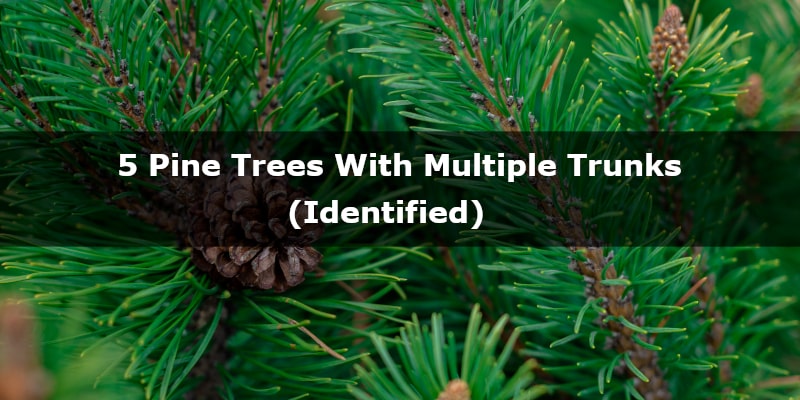Are you looking for a pine tree with multiple trunks?
Among all pine trees, I’ve gathered the ones with multiple trunks and created this article, so you can identify the one that you’re looking for.
Mugo Pine
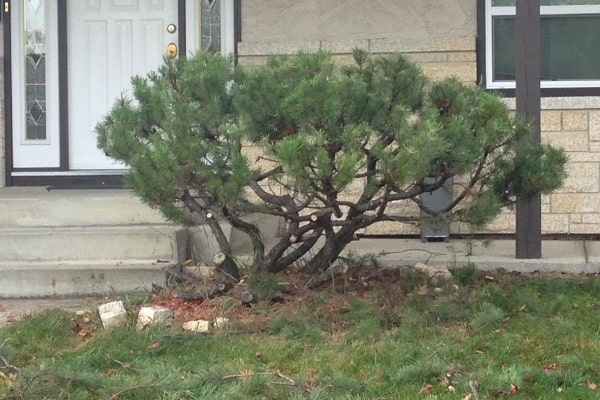
Mugo pine is probably the tree that you’re looking for. The scientific name of this tree is Pinus mugo. It’s a dwarf, creeping shrub or small tree with hard, heavy branches.
It’s native to high mountains of Central Europe. In the USA, you can spot it in 3-7 growing zones, however, it can occasionally grow in zone 8. As a shrub, Mugo pine can reach up to 6 feet (180 cm), but as a tree, it might be even 20 feet (6 meters) tall.
Mugo pine when planted in mass can serve to hold soil and prevent erosion. The most popular varieties of Mugo pine are Compacta, Sherwood Compact, Enci, Gnome, and Mops.
Pinus mugo features stout, dark green needles 1–2″ (2.5-5 cm) in length with finely toothed margins. Color often turns yellowish-green in the winter. Grows in a pyramidal, rounded shape.
Lacebark Pine
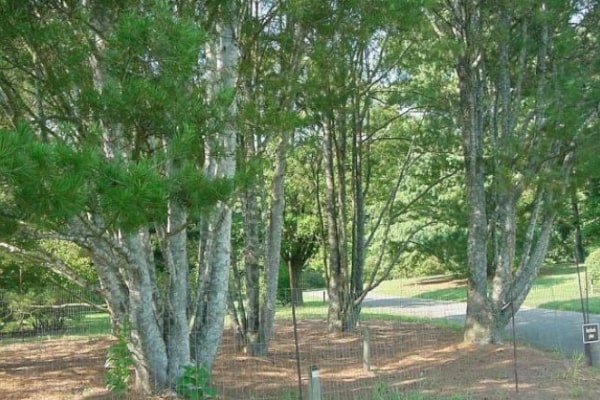
Lacebark pine is a tree with exfoliating bark. It grows slowly, taking 50 years to reach a mature height of 50 feet (15 meters). Its attractive bark makes it a favorite landscape specimen.
The Lacebark pine has three needles per bundle. It’s native to China. In the USA, it grows in 5-9 zones.
Lacebark pine tree bark peels gradually over time, usually starting once the tree is about ten years old. The resulting look is camouflage-like and provides year-round interest.
Bark on young trees is smooth, colored dull gray, scaling off in small patches, changing to chalky-white on old trunks.
Needles persist 3 to 4 years on the tree, giving off a turpentine-like odor when bruised. Needles are dark green color, rather rigid, flattened, 2 to 3 inches (5-7.5 cm) long with finely toothed margins, sharply pointed apices, and faint stomatal lines on each surface
Tanyosho Pine
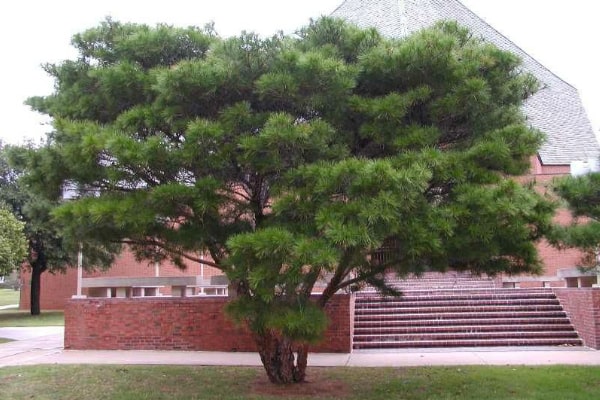
Tanyosho pine, known as Pinus densiflora is the most common of all pine trees native to Japan. Umbraculifera is a dwarf variety, multi-stemmed, shrubby, vase-shaped usually grown as a shrub or small tree. It is often used in foundation plantings and is sometimes grown by bonsai enthusiasts.
Over time the branches spread out lending to its characteristic umbrella shape.
This species of pine has two needles per bundle. The tree reaches 12-20 ft (3.6-6 meters). It grows in the 3-7 USDA growing zones.
Bristlecone Pine
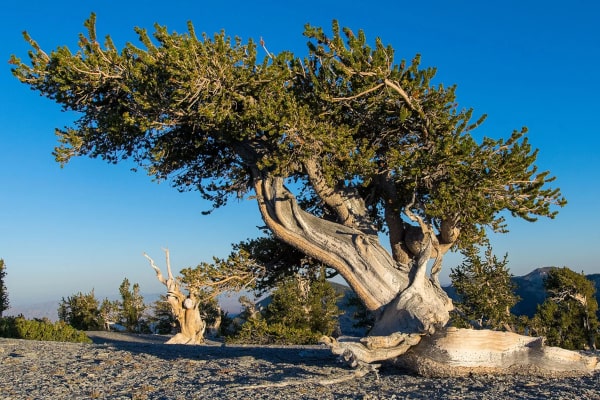
Pinus aristata is a slow-growing, long-lived tree native to the southern Rocky Mountains that can’t be mistaken for any other pine tree.
It makes a great specimen tree in the landscape, where its small size is perfect. It is a dwarfish species that can be used as a shrub or allowed to grow to small tree sizes.
Bristlecone pine features five needles per bundle. It is one of the oldest known living plants at more than 4,000 years old. It reaches 8-30 feet (2.5-9 meters) in height and grows in 4-8 USDA growing zones.

